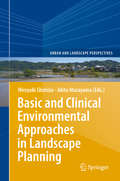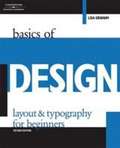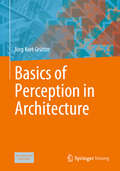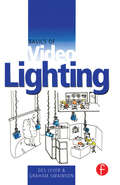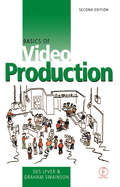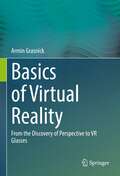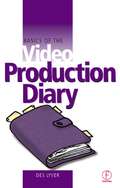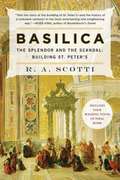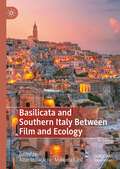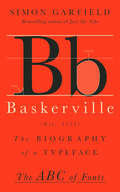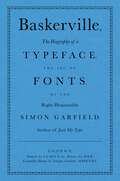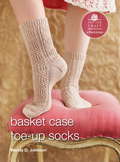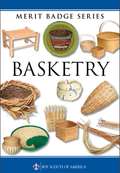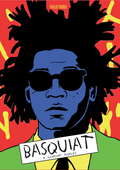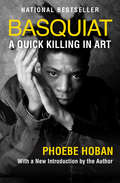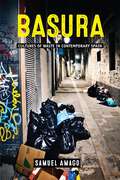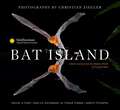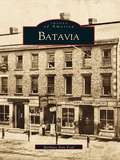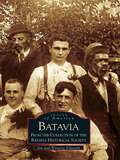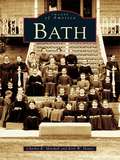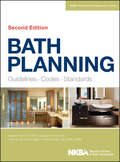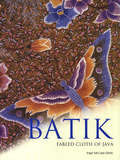- Table View
- List View
Basic and Clinical Environmental Approaches in Landscape Planning (Urban and Landscape Perspectives #17)
by Hiroyuki Shimizu Akito MurayamaOur societies need to solve difficult issues to attain sustainability. The main challenges include, among others, global warming, demographic change, an energy crisis, and loss of biodiversity. In tackling these issues, a holistic understanding of our living space is important. The field of landscape planning and design is at the core the holistic concept and it makes several contributions to achieving sustainability. First, landscape planning and design connects different spatial scales: from site to region to the planet. Second, it focuses on close interrelationships between human activities and nature. Third, it is concerned with people's values toward their surroundings. This book is based on the presentations made by German and Japanese scholars at the international symposium "New Trends of Landscape Design: Seamless Connection of Landscape Planning and Design from Regional to Site Scales -- The Cultural Context" held on November 5, 2012, at the Graduate School of Environmental Studies, Nagoya University.
Basics of Design: Layout and Typography for Beginners (2nd edition)
by Lisa GrahamThis classic introduction to high-impact page design is now fully updated for a new generation of designers. Basics of Design: Layout and Typography for Beginners demystifies the design process with straightforward and complete explanations of the fundamental principles that create first-rate visual design. Readers learn essential design terminology and develop their knowledge and skills through visual examples and hands-on activities that reinforce page layout and typography concepts. Side-by-side critiques of before-and-after page layouts help readers understand how to apply design principles to their own efforts and point the way to excellence in design.
Basics of Perception in Architecture
by Jörg Kurt GrütterThis book makes the extremely complex process of architectural perception far more transparent and thus contributes to a better understanding of our built environment. Why is there so much debate about the appearance of our built environment, about the aesthetics of architecture today? Why do opinions about the aesthetic quality of buildings often diverge extremely even among experts? Why can’t we agree on architecture, on what is beautiful and what is not? Most areas of construction, such as statics and building physics, are measurable and can therefore be substantiated with objective arguments. Yet this does not apply to the unquantifiable aesthetics of architecture. Accordingly, judgments on aesthetics are always subject-specific, and strongly dependent on the viewer. Nevertheless, the aesthetics of architecture is not just a matter of taste. Many relationships between buildings as objects and viewers as subjects can be determined objectively with the help of perceptual psychology and information theory, as this book demonstrates.
Basics of Video Lighting
by Des Lyver Graham SwainsonNow fully updated by Des Lyver to reflect the latest advances, the second edition of Basics of Video Lighting is a primer for anyone wishing to learn about lighting a video production. It describes the principles and processes involved in obtaining professional results in educational, training and corporate environments. Assuming little prior knowledge, this book covers everything from the different types of lights and their control, to basic studio and location settings. It features:· the latest technology, including the use of location and grip gear and changes in lamp and reflector technology · coverage of studio and location work· descriptions of the role of each crew member · full explanations of technical terms· health and safety precautions· practical advice on the equipment available and how to use itBasics of Video Lighting aims to provide the reader with a rapid understanding of what is actually a complex process, without getting too bogged down in technical terms. It is equipment non-specific and references to technical matters are only included where necessary to understanding, for example a short explanation of the simple electricity that is needed to understand the relationship between the camera and the lights.
Basics of Video Production (Basics Of Ser.)
by Des Lyver Graham SwainsonNow fully updated by Des Lyver to reflect the latest advances, the second edition of Basics of Video Production is a primer for anyone wishing to learn about video production. It describes the principles and processes involved in obtaining professional results in educational, training and corporate environments. Assuming little prior knowledge, this book takes the reader on a guided tour around a studio or location production, examining the production process from conceptualisation to the final screening. It features:· the latest advances in low cost non-linear editing and digital video· coverage of studio and location work· descriptions of the role of each crew member · full explanations of technical terms· health and safety precautions· practical advice on the equipment available and how to use itBasics of Video Production aims to provide the reader with a rapid understanding of what is actually a complex process, without getting too bogged down in technical terms. It is equipment non-specific and references to technical matters are only included where necessary to understanding. Much of what is contained in this book will be directly transferable to film and sound courses as the basics and principles are the same.
Basics of Virtual Reality: From the Discovery of Perspective to VR Glasses
by Armin GrasnickToday, the reality we know can be recorded and reproduced true to reality using technical processes. Space and time are recreated virtually as a copy in artificial reality. However, the reproduction of virtual reality is not limited to a mere copy of what exists. A visitor to the virtual space does not have to be content with the pixelated image of the old familiar, but can encounter unreal phenomena in the illusory world that never existed in real life or are even physically impossible. This enables an expansion of the recorded reality and allows the perception of surprisingly new perspectives.A perspective denotes the perception of a fact from a certain point of view and corresponds to the way of looking at things. But a perspective is also the observation of a scene from a viewing position. From different perspectives the illusion of reality arises during the reproduction by observation. This vision is not based on imagination or hallucination, but is the basic function of virtual reality. This book describes the concepts, systems, and technologies used to create virtual reality from its ancient beginnings to the present, and provides a glimpse into a possible future.This book is a translation of the original German 1st edition Grundlagen der virtuellen Realität by Armin Grasnick, published by Springer-Verlag GmbH Germany, part of Springer Nature in 2020. The translation was done with the help of artificial intelligence (machine translation by the service DeepL.com). A subsequent human revision was done primarily in terms of content, so that the book will read stylistically differently from a conventional translation. Springer Nature works continuously to further the development of tools for the production of books and on the related technologies to support the authors.
Basics of the Video Production Diary (Basics Of Video Ser.)
by Des LyverVideo production requires a high degree of organization to be a success. Good organization will require a proper diary to be kept of your production. It is the understanding of the paperwork and its organization that will make your production either a success or a failure.Explained in accessible terms and assuming little prior knowledge of the subject, this book will help you to: plan successful procedures for all stages of a video production; produce paperwork logically to get professional results; understand the basic principles of setting up and running your own business; avoid common (and costly) pitfalls. If you are a student who wishes to learn about all aspects of planning and documenting a video production, from conceptualization right through to final screening, this book is for you. It is particularly suitable for the City and Guilds Media Techniques Certificate: Television and Video Production Competences. This book complements the other three titles in the series, which allow you to understand the overall process of video production, and then look in more detail at sound and lighting.
Basilica
by R A ScottiIn 1506, the ambitious Renaissance pope Julius II laid the foundation of a new St. Peter¿s Basilica that would be the defining event of the epoch. To build his grand church, the pope razed the most sacred shrine in Europe -- the original St. Peter¿s, erected by the emperor Constantine more than a millennium before. Here, Scotti takes us through the construction of the new basilica, an endeavor that spanned two centuries and was marred by intrigues, assassination attempts, decadence, and a sack of Rome. The popes who built St. Peter¿s coaxed and commanded the greatest work from the giants of the Renaissance and Baroque: Michelangelo, Bramante, and his protégé Raphael; the architect Giacomo della Porta; and the prodigy Bernini. Illus.
Basilicata and Southern Italy Between Film and Ecology
by Alberto Baracco Manuela GieriThis volume offers an open, transdisciplinary living space (also green) through which to explore the different connections between Basilicata and Southern Italy, cinema, and ecology, and thus to reflect on the different forms through which the historical, cultural, and social contexts of Southern Italian regions have been variously identified and represented. In order to explore these connections, the volume embraces a wide range of perspectives that may all be grouped under the key term film ecocriticism, offering the reader a thorough analysis not only of the different ways of representing reality but also of the processes of signification through which reality itself can be understood, rethought, and transformed. This is the general framework within which the authors consider film as a proper, effective medium for ecocritical and ecophilosophical reflections concerning not only Basilicata (to which the greater part of the volume is dedicated) but also Southern Italy and, therefore, its history and its territories, communities, and identities. Furthermore, in an even more general sense, Basilicata and Southern Italy reconnects with the very idea of the South, and of all Souths, to which this volume is dedicated.
Baskerville: The Biography of a Typeface (The ABC of Fonts Series #0)
by Simon GarfieldA compact and charming history of the classic Enlightenment font by the New York Times best-selling author of Just My Type. When Baskerville was first created in 1757, there was concern that it would damage readers’ eyes with its combination of thin and thick strokes and tapering serifs. Yet 250 years later, it remains one of the most commonly used typefaces in books of all kinds. As best-selling author Simon Garfield tells it, the tale of this elegant typeface is one of painstaking dedication. The font’s creator, John Baskerville, was a maverick lacquer maker and master printer who made it his life’s mission to achieve the font’s perfection. His efforts culminated in his magnificent Bible, acclaimed as the finest ever made. Garfield explores why Baskerville’s own body was dug up and buried many times before finally being allowed to rest in peace, and examines his legacy through the work of his wife, Sarah Baskerville—one of the first powerful women in the printing world—and the archivists and enthusiasts working to preserve the font’s original steel punches today.
Baskerville: The Biography of a Typeface (The ABC of Fonts) (The ABC of Fonts)
by Simon GarfieldThe classic elegant English typeface, still widely used as a book text more than 250 years since its creation. Baskerville is a transitional design, poised between the first metal types and modern styles, notable for its combination of fat and thin strokes. When it was first used there was genuine concern that it would damage readers' eyes.John Baskerville was a maverick lacquer maker and printer in Birmingham, a flamboyant dresser, an important figure in the Enlightenment. Though it earned him little money, he was obsessive about both his typeface and its appearance on the page, a perfectionism culminating in his magnificent Bible. The story encompasses one of the first powerful women of the printing world, his wife Sarah Baskerville, and the many typefaces the Baskervilles inspired. And it examines why John Baskerville's body was dug up and buried many times before it was finally allowed to rest in peace.
Basket Case Toe-Up Socks: ePattern from Toe-Up Socks for Every Body (Potter Craft ePatterns)
by Wendy D. JohnsonA pattern for making toe-up socks.
Basketry (Merit Badge Series)
by Boy Scouts of America StaffA handbook for earning the Boy Scout merit badge in basketry. Includes information on history of basketwork, weaving and types of materials used, and caning.
Basquiat: A Graphic Novel (Graphic Lives)
by Paolo Parisi"…a beautifully illustrated hardcover book... Inside you'll find the story of Basquiat's life relayed in a quick-to-read, visually dazzling fashion." -Forbes.com Cool, talented, and transgressive, Jean-Michel Basquiat's life is just as fascinating as the work he produced. Delve into 1980s New York as this vivid graphic novel takes you on Basquiat's journey from street-art legend SAMO to international art-scene darling, up until his sudden death. Told through cinematic scenes, this is Basquiat as seen through the eyes of those who knew him, including his father, Suzanne Mallouk, Larry Gagosian, and, most importantly, the man himself. Basquiat is a moving depiction of a troubled artist's life for those interested in both the art and the man who made it.
Basquiat: A Graphic Novel (biography Of A Great Artist; Graphic Memoir)
by Paolo Parisi"…a beautifully illustrated hardcover book... Inside you'll find the story of Basquiat's life relayed in a quick-to-read, visually dazzling fashion." -Forbes.com Cool, talented, and transgressive, Jean-Michel Basquiat's life is just as fascinating as the work he produced. Delve into 1980s New York as this vivid graphic novel takes you on Basquiat's journey from street-art legend SAMO to international art-scene darling, up until his sudden death. Told through cinematic scenes, this is Basquiat as seen through the eyes of those who knew him, including his father, Suzanne Mallouk, Larry Gagosian, and, most importantly, the man himself. Basquiat is a moving depiction of a troubled artist's life for those interested in both the art and the man who made it.
Basquiat: A Quick Killing in Art
by Phoebe HobanA New York Times Notable Book: This national bestseller is a vivid biography of the meteoric rise and tragic death of art star Jean-Michel Basquiat Painter Jean-Michel Basquiat was the Jimi Hendrix of the art world. In less than a decade, he went from being a teenage graffiti artist to an international art star; he was dead of a drug overdose at age twenty-seven. Basquiat's brief career spanned the giddy 1980s art boom and epitomized its outrageous excess. A legend in his own lifetime, Basquiat was a fixture of the downtown scene, a wild nexus of music, fashion, art, and drugs. Along the way, the artist got involved with many of the period's most celebrated personalities, from his friendships with Keith Haring and Andy Warhol to his brief romantic fling with Madonna. Nearly thirty years after his death, Basquiat's story--and his art--continue to resonate and inspire. Posthumously, Basquiat is more successful than ever, with international retrospectives, critical acclaim, and multimillion dollar sales. Widely considered to be a major twentieth-century artist, Basquiat's work has permeated the culture, from hip-hop shout-outs to a plethora of products. A definitive biography of this charismatic figure, Basquiat: A Quick Killing in Art is as much a portrait of the era as a portrait of the artist; an incisive exposé of the eighties art market that paints a vivid picture of the rise and fall of the graffiti movement, the East Village art scene, and the art galleries and auction houses that fueled his meteoric career. Basquiat resurrects both the painter and his time.
Basura: Cultures of Waste in Contemporary Spain (Under the Sign of Nature)
by Samuel AmagoWhat makes trash trash? How do we decide what to throw away? Driven by these questions and others, Samuel Amago takes us through the streets and alleys of Spain, sorting through recycling bins, libraries, social media, bookstores, and message boards in search of things that have been forgotten, jettisoned, forsaken. Ranging in topic from the transformation of urban space during the transition to democracy to a twenty-first-century sanitation strike that paralyzed Madrid for weeks, from the films of Pedro Almodóvar to graphic novels about Spain’s housing crisis, Basura presents an alternative story of contemporary Spanish culture through the lens of wasted things.Not merely an environmental problem, the proliferation of trash is an indicator of the social, political, and economic processes that undergird late, neoliberal capitalism. In chapters on cinema, photography, archaeology, drawing, comics, literature, ecology, and urban design, Amago places waste objects into dialogue with the cultural practices and structures of power that have produced them. Drawing from archaeological, ecocritical, and new materialist approaches, Amago argues that discards possess agency and generate an array of effects. Just as trash never fully disappears but returns to haunt its creators, so history never vanishes despite being buried or ignored by official narratives. Basura considers the efforts of artists, writers, and designers for whom waste is a means to withstand cultural erasure.
Bat Island: A Rare Journey into the Hidden World of Tropical Bats
by Dr. Rachel A. Page Dr. Dina K. Dechmann Dr. M. Teague O'Mara Dr. Marco Tschapka The Smithsonian Tropical Research InstituteFeaturing incredible photography and insight from an international team with long-term ties to the Smithsonian Tropical Research Institute, Bat Island spotlights the unique beauty and environmental importance of the seventy-six species of bats on Panama&’s Barro Colorado Island.For decades, scientists at the Smithsonian Tropical Research Institute have studied the remarkable biodiversity of bats on Barro Colorado Island in Panama, where an astonishing seventy-six species coexist. Now, for the first time, Smithsonian scientists&’ expertise pairs with the stunning photography of National Geographic contributor Christian Ziegler for a captivating visual journey into the fascinating world of these elusive night creatures. Bats are unique among mammals: they have acquired true flight, provide essential ecosystem services, and represent the ecologically most diverse group of mammals worldwide. Synthesizing decades-worth of intensive study, Drs. Rachel Page, Dina Dechmann, Teague O&’Mara, and Marco Tschapka provide authoritative insight alongside 150 photographs that showcase bats&’ extraordinary environmental adaptations and rich natural history. OVER 150 STUNNING PHOTOGRAPHS: National Geographic photographer and contributor Christian Ziegler has captured over a decade&’s worth of images of the myriad of bat species living on Barro Colorado Island that capture these elusive animals in a variety of settings, from night shots of flight through the tropical rainforest to closeups of their remarkable wings and feeding patterns. WRITTEN BY SMITHSONIAN SCIENTISTS: All chapters of Bat Island are written by scientists long affiliated with the Smithsonian Tropical Research Institute, one of the world&’s leading tropical research organizations that spans a century. Topics include bats&’ diverse sensory abilities, foraging strategies, roosting ecologies, and social systems. DECADES OF CUTTING-EDGE RESEARCH: Bat Island, published in partnership with the Smithsonian, presents fascinating insights from scientists working at the Smithsonian Tropical Research Institute, which boasts decades of study of the hyperdiverse bat population on Barro Colorado Island in addition to the most comprehensive and long-term datasets on tropical bats. CALL FOR CONSERVATION: Drs. Page, Dechmann, O&’Mara, and Tschapka highlight how bats are threatened by habit fragmentation and land degradation, and communicate the initiatives needed to ensure the survival of these animals, which are critical to maintaining healthy, balanced ecosystems. RARE BEAUTY: Award-winning photojournalist Christian Ziegler&’s photography illuminates the unique beauty and allure of bats and the tropical rainforest in Panama.
Batavia
by Barbara Ann ToalLocated midway between Buffalo and Rochester, Batavia was an important area hundreds of years before Columbus arrived in America. Two long Indian trails converged here at what is known as the Great Meeting Place: one leading from Lake Erie to the Hudson River and the other from Lake Erie to the Susquehanna River. With more than 200 stunning images, Batavia recounts the history of the area from the early settlement at the Great Bend of the Ton-ne-wan-ta to the vibrant city that Batavia is today. The book tells the story of the Holland Land Company and its connection to the American Revolution; the railroads and their importance to theindustrial growth of the city; and the urban renewal of the later 1900s, as well as the more current architectural restoration projects.
Batavia: From the Collection of the Batavia Historical Society
by Jim Edwards Wynette EdwardsSituated directly west of Chicago is Batavia, Illinois, world famous as the home of Fermilab, a center of nuclear research that hosts scientists from all over the world. Few people realize that this city has had a long history of leadership in the development of energy resources. In Batavia we endeavor to explore that history, with a look at power from windmills to power plants. Also part of the fabric of Batavia's past are the community leaders who transformed a river village (settled in the 1830s) into a vibrant and vital modern city. You will view a 1910 photographic essay capturing Batavians on the streets of their city, discover a unique early high-tech company that produced beauty and dietary consumer products in the 1930s, and experience an architectural walking tour (complete with a map) of old Batavia and her famous citizens. And to complete our journey through time, you will learn how Mary Todd, wife of Abraham Lincoln, came to live in Batavia.
Bath
by Kirk W. House Charles R. MitchellBath is the home of America's oldest county fair. The commmunity was planned as western New York's "Queen City," a great metropolis, with broad tree-lined boulevards and spacious squares. Airplanes and ladders were made here, and four railroads-from the "champagne train" to the "kick and push" line-ran through town. Today, Bath remains a town of wide avenues, well-kept greens, dramatic cliffs, busy dairies, and the famous fair that has been held every year for nearly two centuries. Bath serves as the welcoming, wide-open back door to the Finger Lakes.
Bath Planning: Guidelines, Codes, Standards (NKBA Professional Resource Library #2)
by NKBA (National Kitchen and Bath Association)The leading resource for student and professional bath designers—completely revised and updated Bath Planning is the most authoritative resource available on the subject, containing everything a professional needs to know to design a safe, functional, effective, and attractive bath. Based on the National Kitchen and Bath Association's Kitchen and Bathroom Planning Guidelines and the related Access Standards, this book presents the best practices developed by the Association's committee of professionals through extensive research. This Second Edition has been completely revised and redesigned throughout, with new full-color photographs and illustrations and a special emphasis on client needs, research, and references to industry information. Features include: New and expanded information on universal design and sustainable design The 2012 edition of the NKBA Planning Guidelines with Access Standards and up-to-date applications of the 2012 International Residential Code New information about storage, cabinet construction, and specifying cabinets Metric measurement equivalents included throughout A companion website with forms and teaching resources for instructors
Bath and Its Neighbors
by Carol K. HeckmanAt the heart of seven converging roads, Bath is the hub of Northampton County. Consisting of a tannery, a gristmill, two stores, and five dwellings in 1816, Bath evolved into a bustling town with over 175 shops, tradesmen, and professionals. Featured among the more than 200 historic photographs are a rare 1700s map of the Scotch-Irish settlement, Moses George Cigar Factory workers, the shops on the West Main Street Bridge, devastation from the 1945 flood, workers picking celery in the fields, and Miss Bath 1962. Meander through Bath and Its Neighbors and feel the tenacity of its people, the exuberance of their celebrations, and the simplicity of a time not so long ago.
Batik
by Brian Brake Inger Mccabe ElliotBatik: Fabled Cloth of Java is a sumptuous, classic book, richly illustrated with color plates of the finest antique and contemporary batik from thirty museums and private collections around the world. It includes historical photographs, etchings, engravings, maps and photographs of modern Java.
Batik
by Brian Brake Inger Mccabe ElliotBatik: Fabled Cloth of Java is a sumptuous, classic book, richly illustrated with color plates of the finest antique and contemporary batik from thirty museums and private collections around the world. It includes historical photographs, etchings, engravings, maps and photographs of modern Java.
